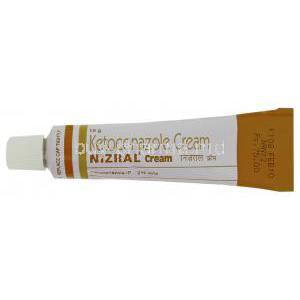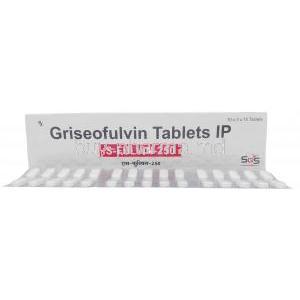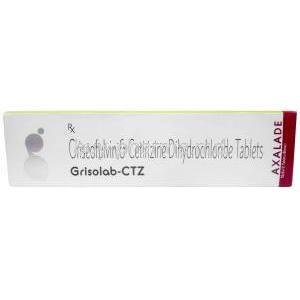Miconazole
- I. Introduction to Miconazole
- II. Composition of Miconazole
- III. How Miconazole Works
- IV. Approved Uses of Miconazole
- V. Off-Label Uses of Miconazole
- VI. Dosage and Administration of Miconazole
- VII. Miconazole: Side Effects and Management
- VIII. Interactions with Miconazole: What to Watch For
- IX. Warnings and Contraindications for Miconazole Use
- X. Careful Administration of Miconazole
- XI. Overdosage of Miconazole: What to Do
- XII. Storage and Handling Precautions for Miconazole
- XIII. Important Precautions when using Miconazole
I. Introduction to Miconazole
A. Brief Overview of Miconazole: History and Development
In the 20th century, Miconazole emerged as a crucial tool in the medical field to combat various fungal infections. As a derivative of imidazole, this antifungal agent has proven safe and effective, making it popular for usage worldwide.
B. Importance and Role in Medical Science
Miconazole has become widely recognized in science due to its strong capabilities in fighting fungal infections. It has dramatically transformed how we approach treatment for surface-level and internal disorders by effectively targeting dermatophytes, yeasts, and other harmful fungi. This remarkable medication also possesses some antibacterial qualities, making it even more versatile in clinical applications.
II. Composition of Miconazole
A. Understanding the Chemical Structure
Miconazole possesses antifungal properties due to its chemical composition. It is a derivative of imidazole. Consists of a molecular structure containing two nitrogen atoms arranged in a five-membered ring. This specific arrangement enables miconazole to hinder the synthesis of ergosterol, an element, in fungal cell membranes, ultimately resulting in the demise of fungal cells.
![]()
B. Inactive Ingredients in Miconazole Products
Miconazole products commonly include inactive or excipient ingredients that assist in delivering and absorbing the medication. Some of these ingredients may involve; Emulsifying agents; They help blend water and oil components. Humectants; retain moisture within the product. Thickening agents; enhance the product's consistency and stability. Preservatives; They prevent any contamination. These additional components play a role in improving the safety, strength, and efficacy of the miconazole formulation.
III. How Miconazole Works
A. The Mechanism of Action
The effectiveness of Miconazole can be attributed to its way of working. It focuses on hindering the production of ergosterol, an element, in the fungal cell membrane. By disrupting this process, Miconazole creates gaps in the cell membrane resulting in the leakage of cell components. Ultimately this leads to the demise of the fungal cell.
B. Understanding the Antifungal Activity
Miconazole exhibits a spectrum of antifungal activity, which means it can effectively inhibit various types of fungi. It is incredibly potent against dermatophytes, yeasts, and molds, often responsible for fungal infections on the skin, nails, and mucous membranes. Additionally, miconazole has demonstrated efficacy in treating certain systemic fungal infections highlighting its extensive role in fighting fungal diseases.
IV. Approved Uses of Miconazole
Miconazole is a medication that effectively treats fungal infections. The FDA has approved it for use. One of its functions is to eliminate fungi on the skin by targeting their cell membrane. This makes it useful in treating conditions like athlete’s foot, jock itch, ringworm, candidiasis, pityriasis (tinea versicolor), and yeast infections on the skin123. Additionally, miconazole is employed in managing thrush, a fungal infection caused by Candida albicans that affects the mouth1. Moreover, it is also authorized by the FDA for treating yeast infections caused by Candida albicans1.
Here are some references that you can check out for more information about Miconazole:
V. Off-Label Uses of Miconazole
Miconazole has potential applications in the field of dermatology as well as ongoing research exploring its usage in unconventional ways. Let’s take a look at some off-label uses:
- Potential Applications in Dermatology: Studies have demonstrated the effectiveness of miconazole in treating dermatitis and psoriasis.
- Research into Unconventional Uses: Scientists have investigated the use of miconazole for treating cancer and Alzheimer’s disease123.
Here are some references that you can check out for more information about Miconazole:
VI. Dosage and Administration of Miconazole
A. Standard Dosage Guidelines
The appropriate amount of Miconazole can differ significantly depending on the illness and the individual patient's unique physiological factors. Typically for surface-level fungal infections, Miconazole is administered to the affected area once or twice a day for a few weeks or until all symptoms have completely disappeared.
B. Instructions for Use: Different Formulations
Miconazole comes in forms, and each one requires specific methods of application. You should apply the cream externally to the affected area, making sure to cover the entire region. The oral gel should be taken in the dosage and applied to the inside of your mouth, usually after meals. As for suppositories, they need to be inserted into the vagina using the provided applicator. It's essential to follow these instructions precisely to get the most out of the medication and minimize any side effects.
C. Adjusting Dosage for Specific Conditions
In some situations, it may be necessary to adjust the Miconazole dosage. For example, if a patient has liver or kidney problems, changes in dosage might be needed because the way the drug is processed and eliminated from the body can be affected. Additionally, when dealing with infections that affect the whole body, it may be necessary to use a higher dose of medication to ensure enough of it at the injection site.
VII. Miconazole: Side Effects and Management
A. Understanding the Common Side Effects
Miconazole is usually well tolerated. It's not uncommon to experience some side effects. These commonly include skin irritation, such as a burning or itching sensation and redness. You might also experience stomach discomfort in some cases, mainly if you're using the gel form.
B. Serious Side Effects: When to Seek Medical Help
In some cases, Miconazole may cause serious side effects. If you experience hives, difficulty breathing, or swelling of the face, lips, tongue, or throat, it could indicate a reaction, and you should seek immediate medical attention. Likewise, if you are experiencing stomach or abdominal pain, persistent nausea or vomiting, or notice dark urine, you must consult a healthcare professional immediately.
C. Minimizing and Managing Side Effects
Following the recommended dosage instructions. Practicing good hygiene in the application area can help reduce the likelihood of experiencing any side effects from using Miconazole. If any side effects do occur, they are typically temporary. It should go away once you stop using the medication. However, if you notice that the side effects persist or worsen, it's essential to seek medical advice.
VIII. Interactions with Miconazole: What to Watch For
A. Potential Drug Interactions
Miconazole may have interactions with other medications. It's important to note that drugs metabolized by CYP3A4, such as warfarin, specific antivirals, or statins, might experience changes in their levels when taken together with Miconazole. This could potentially result in either treatment not being practical or causing harm. Make sure to inform your healthcare provider about all the medications you are currently using.
B. Miconazole and Food: What to Avoid
There are no food interactions with Miconazole. However, using the gel after meals is recommended for optimal contact with the mouth lining. It's also an idea to wait before rinsing your mouth after applying the gel.
C. Effect of Other Medical Conditions
Individuals with medical conditions, such as liver disease or immune system disorders, should exercise caution when using Miconazole. These conditions can potentially impact the drug's metabolism and efficacy. Similarly, pregnant or breastfeeding women should only utilize Miconazole if necessary and with the advice of a healthcare professional.
IX. Warnings and Contraindications for Miconazole Use
A. Who Should Avoid Miconazole: Specific Health Conditions
While Miconazole is generally considered safe, certain groups need to be cautious. People with liver problems or severe kidney dysfunction should know that altered drug processing and elimination may increase the risk of experiencing effects. Additionally, individuals with a known sensitivity to Miconazole or any ingredient in the product should avoid using it.
B. Contraindications: When Miconazole Isn't the Right Choice
Patients who have a hypersensitivity to miconazole should avoid using the drug. Additionally, suppose you are currently taking certain anticoagulants or cholesterol-lowering drugs. In that case, it is advisable to consult your healthcare provider before starting miconazole therapy, as there could be potential interactions between the medications.
X. Careful Administration of Miconazole
A. Administration to the Elderly
Caution should be exercised when administering Miconazole to individuals, especially if they have pre-existing liver or kidney conditions, as they may be more vulnerable to its adverse effects. It is advisable to monitor them and consider adjusting the dosage to ensure safe and effective use.
B. Use in Pregnant Women and Nursing Mothers
Miconazole can be used during pregnancy only if the benefits outweigh the potential risks to the fetus. While it is unclear whether Miconazole is passed through breast milk, caution should be taken when giving it to a nursing mother.

C. Administration to Children: Safety and Precactions
Although Miconazole is generally considered safe for children, it is essential to adjust the dosage based on their weight and the severity of their condition. Additionally, since children have permeable skin compared to adults, caution should be exercised to avoid excessive medication absorption.
XI. Overdosage of Miconazole: What to Do
A. Recognizing Signs of Overdose
It is doubtful for an overdose to occur with applications of Miconazole. However, if taken orally in amounts, it may cause symptoms like vomiting, diarrhea, and signs of neurological disruption. It is essential to recognize these symptoms to manage overdose situations effectively.
B. Steps to Take in Case of Overdose
If someone takes much Miconazole, the initial action is to stop using the medication and provide support and treatment for the symptoms. If the product has been swallowed, steps can be taken to prevent it from being absorbed, like washing out the stomach. It's crucial to seek medical help to handle the situation appropriately.
XII. Storage and Handling Precautions for Miconazole
A. Proper Storage Guidelines
To maintain the quality of miconazole, it is best to store it in a dry location away from direct sunlight and excessive heat. It is essential to keep it out of children's reach and sight. Generally storing at room temperature, between 20 and 25 degrees Celsius is ideal. For storage guidelines, please refer to the packaging or accompanying leaflet.
B. Safety Precactions While Handling Miconazole
When using Miconazole, it's essential to be cautious and avoid getting it in your eyes and mouth, especially when applying it topically. Remember to wash your hands before and after using the medication. If Miconazole accidentally comes into contact with these areas, make sure to rinse them with water. Keep in mind that Miconazole is intended for use only unless instructed otherwise by your healthcare provider.
XIII. Important Precautions when using Miconazole
A. Avoiding Common Mistakes
Here are a few essential things to keep in mind when using Miconazole;
1. Stick to the Treatment; It's essential not to stop the treatment once you start feeling better. Make sure to complete the course as prescribed by your healthcare provider. This will ensure that the fungal infection is completely eradicated.
2. Missed Dose; If you miss a dose, apply it as soon as you remember. However, if it's already close to the time for your dose, it's better to skip the missed one. Avoid doubling up on doses to compensate for the missed one.
3. Avoid Overuse; Applying Miconazole more frequently than recommended doesn't make it more effective but may increase the risk of experiencing adverse effects.
Remembering these points will help you use Miconazole safely and effectively.
B. Adhering to Treatment Guidelines for Best Results
To achieve the outcomes, it's essential to follow these guidelines;
1. Proper Application: apply the medication as instructed, covering the affected area. If you're using a gel, it's advisable to apply it after meals for maximum contact time.
2. Complete the Course; Even if your symptoms improve before the treatment is over, it's essential to complete the entire course of treatment. This helps prevent the infection from recurring.
3. Regular Check-ups: follow-up appointments with your healthcare provider are recommended. This allows them to monitor your progress with the treatment and address any side effects.
Remember, everyone responds differently to medication. So being patient and following your healthcare provider's instructions diligently will significantly contribute to achieving results from your Miconazole treatment.
Miconazole FAQ
- What is Miconazole Nitrate?
- What is Miconazole Nitrate Cream?
- What is Miconazole Powder?
- What is Miconazole 7?
- What are the side effects of Miconazole?
- How does Miconazole compare to Tioconazole?
- What is Miconazole Vaginal Cream?
- Is Miconazole safe for dogs?
- What types of infections can Miconazole treat on dogs?
- What is the effectiveness of Miconazole for yeast infections?
- What is Miconazole 3?
- Is Miconazole effective for ringworm?
- Is Miconazole Cream effective for yeast infections?
- What is Miconazole Nitrate Vaginal Cream?
- How effective is Miconazole for ringworm?
- What are the uses of Miconazole Cream?
- What is Miconazole Nitrate 2?
- What is Miconazole Antifungal Cream?
- What is Miconazole Oral Gel?
- What is Miconazole Nitrate Powder?
- What is a Miconazole Suppository?
- Is Miconazole available at Walgreens?
- Can Miconazole be used for bacterial vaginosis (BV)?
- What is Miconazole Shampoo?
- Is Miconazole available at CVS?
- What is Miconazole Spray?
- Can Miconazole be used by men?
- What is a Miconazole Tablet?
- Is Miconazole available over the counter?
- Is Miconazole safe in pregnancy?
- How does Miconazole compare to Nystatin?
- What is Miconazole Ointment?
- What are the uses of Miconazole Nitrate Cream?
- What is Miconazole Nitrate 2 Antifungal Cream?
- What is Miconazole Topical?
- Can Miconazole be used for cats?
- Is Miconazole available at Walmart?
- Can Miconazole be used for jock itch?
- Should I use Miconazole or Clotrimazole?
- Can Miconazole be used as a vaginal suppository?
- Is Miconazole safe during pregnancy?
- How does Miconazole Nitrate compare to Clotrimazole?
- How does Miconazole Nitrate compare to Tolnaftate?
- Is Miconazole safe in pregnancy?
- What is Miconazole Topical Cream?
- What is Miconazole Equate?
- What are the side effects of Miconazole Cream?
- Can Miconazole treat bacterial vaginosis (BV)?
- Can Miconazole be used for dogs' ears?
- What is oral Miconazole?
- What is Miconazole Monistat?
- What is Miconazole Gel?
- What is Miconazole Lotion?
- What are Miconazole pills?
- Can Miconazole Nitrate be used for ringworm?
- Does Miconazole cause burning?
- Is there a Miconazole dog shampoo?
- Can Miconazole be used for diaper rash?
- How does Miconazole compare to Ketoconazole?
- Is Miconazole cream available over the counter (OTC)?
- What are the uses of Miconazole?
- Is Miconazole powder available over the counter?
- What are the uses of Miconazole Nitrate?
- What are the brand names of Miconazole?
- Is Miconazole available over the counter?
- Why does Miconazole sometimes burn when applied?
- How is Miconazole used?
- Should I use Miconazole or Tioconazole?
- How does Miconazole compare to Fluconazole?
- What is Miconazole and Zinc Oxide topical?
- Can Miconazole be used for oral thrush?
- Is Miconazole safe during pregnancy?
- Can Miconazole be used on dogs' ears?
- How do you use Miconazole 7?
- What is the difference between Miconazole and Clotrimazole?
- Can Miconazole cream be used for ringworm?
- What is the generic name for Miconazole?
- What is the dosage for Miconazole?
- Can Miconazole Nitrate be used on dogs?
- How is Miconazole used for oral thrush?
- Can Miconazole be used for nipple thrush?
- Can Miconazole be used for nail fungus?
















